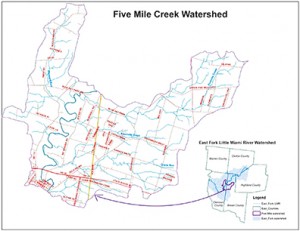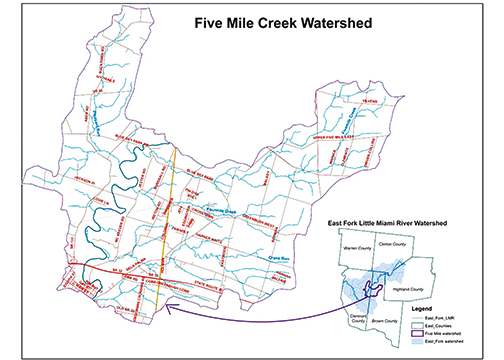
Sun staff
The application deadline for conservation funds available to farmers in the Five Mile Creek watershed is March 18.
The funds, which are part of the Natural Resources Conservation Service’s Environmental Quality Incentives Program, are available to farmers in the watershed who want to improve the natural resources on their lands.
The voluntary conservation program supports agriculture and environmental quality as compatible goals, according to a press release.
Through the program, farmers are offered financial and technical help with management conservation practices on agricultural land.
“We can fund projects anywhere from one to three years, depending on the preference of the applicant,” said Lori Lenhart, conservationist for the NRCS.
Farmers can earn $60 per acre for growing cover crops during the winter and $27 per acre for gypsum application.
Gypsum is a mineral that helps aggregate the soil, which allows rain water to move into the soil better. This helps reduce erosion and the runoff of sediments and phosphorus, according to Lenhart. The calcium in gypsum also binds strongly with phosphorus, reducing chances of runoff and increasing uptake by the growing crop.
The group has been working with the William H. Zimmer Nuclear Power Station in Moscow to procure gypsum.
Farmers can earn $12 per acre by working with the group on basic nutrient management practices; the group gives recommendations on the right time to apply fertilizer, the rate of application, the location and the placement.
Farmers can also earn $29 per acre by implementing grid soil sampling, and using the results to determine when and where to apply fertilizers on a field.
Typically, farmers will submit a soil sample for every 25 acres to apply fertilizer based on recommendations for that acreage, Lenhart said.
‘With the grid sampling, they will submit a soil sample for every 2.5 acres, so it really narrows it down and helps farmers focus in on changes over their farm fields; there’s always ups and downs, highs and lows in the fertilizer count in the soil,” Lenhart explained. “If farmers apply their fertilizer based on the grid samples, it really narrows it down and helps them match more closely what their fields need.”
She added, “The practice can really save the farmer a lot of money in the long run by focusing the fertilizer application where it’s needed; they could end up using half the fertilizer of what they had been using.”
Officials from the NRCS enjoy working with local farmers to develop plans that best fit their operation and goals, while also protecting our soil and improving the quality of our streams and lakes, Lenhart said in a press release.
“The motivation is to encourage farmers to try something different that they never tried before,” she said. “So we’ll provide incentive payments for management practices, such as cover crops or converting to a no-till operation, to help them change their management styles, with the hope that they will see the benefits on their farms and continue doing those projects on their own.”
She added, “We’re fronting some of the costs for them to make a change, and hopefully they will see the benefits and continue to use those practices.”
To apply for the program, contact Lenhart before March 18 at 513-732-2181, ext. 102, or by email at lori.lenhart@oh.usda.gov.

